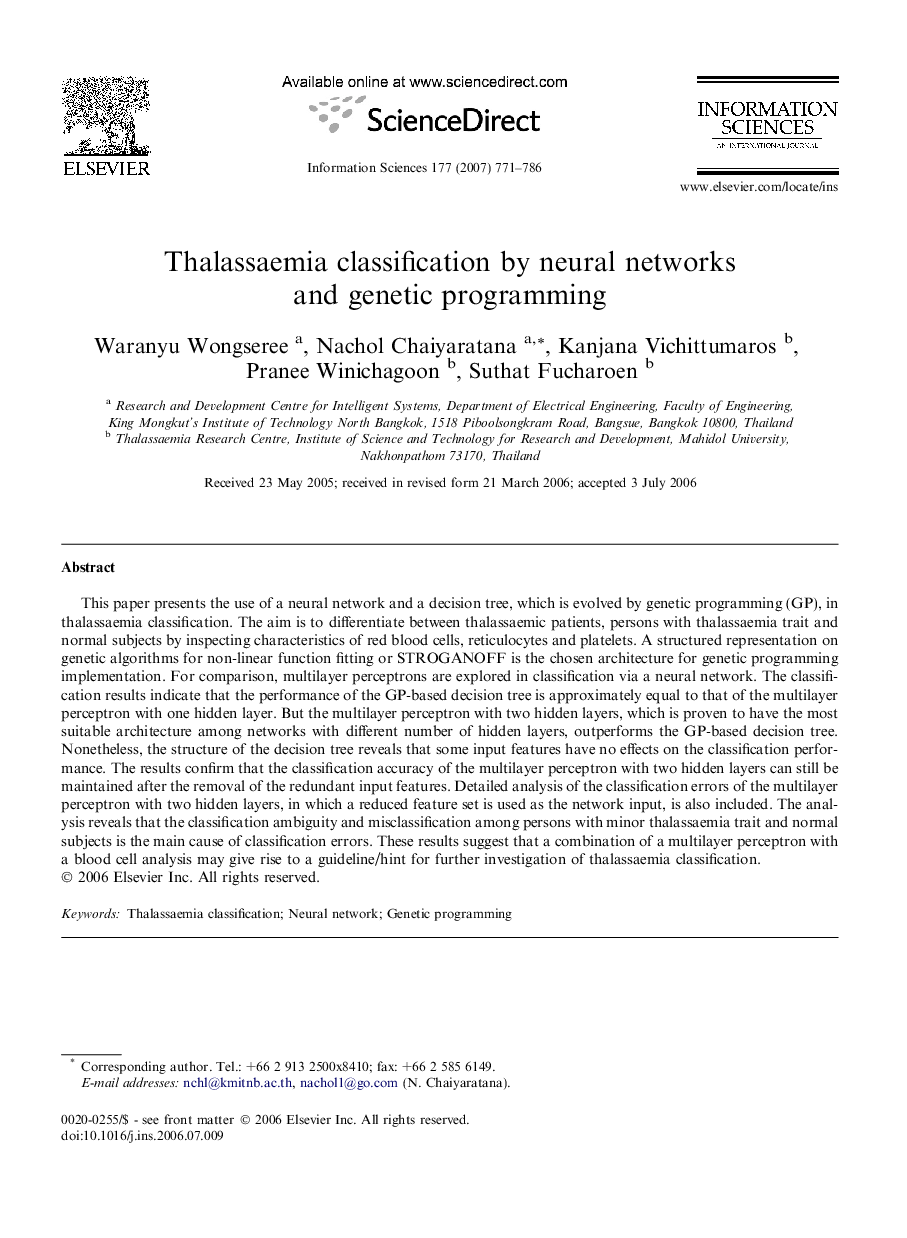ترجمه فارسی عنوان مقاله
طبقه بندی تالاسمی توسط شبکه های عصبی و برنامه نویسی ژنتیک
عنوان انگلیسی
Thalassaemia classification by neural networks and genetic programming
| کد مقاله | سال انتشار | تعداد صفحات مقاله انگلیسی |
|---|---|---|
| 79490 | 2007 | 16 صفحه PDF |
منبع

Publisher : Elsevier - Science Direct (الزویر - ساینس دایرکت)
Journal : Information Sciences, Volume 177, Issue 3, 1 February 2007, Pages 771–786
ترجمه کلمات کلیدی
طبقه بندی تالاسمی؛ شبکه عصبی؛ برنامه نویسی ژنتیک
کلمات کلیدی انگلیسی
Thalassaemia classification; Neural network; Genetic programming

